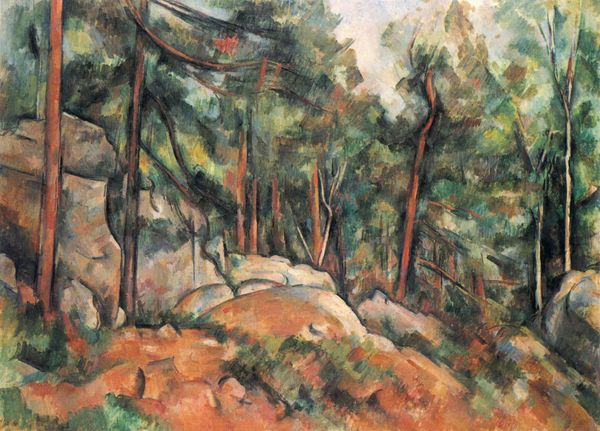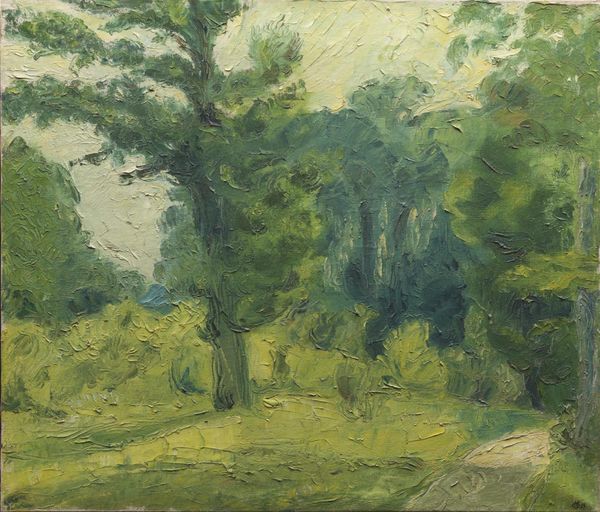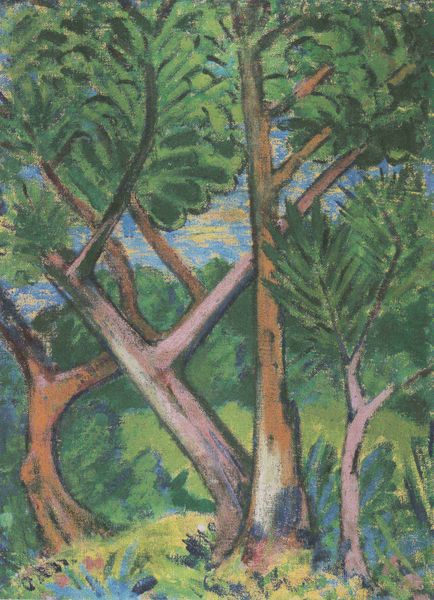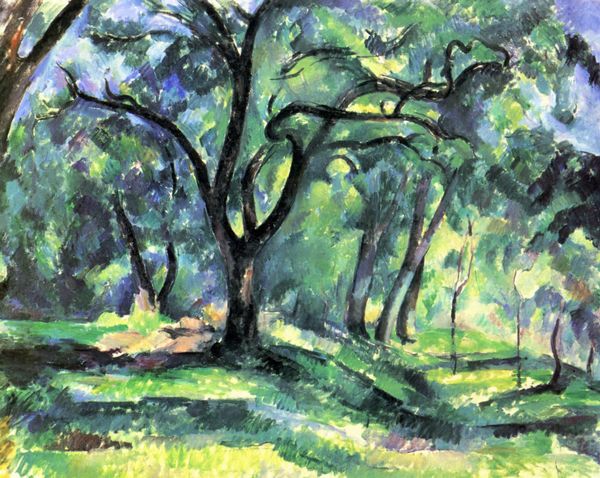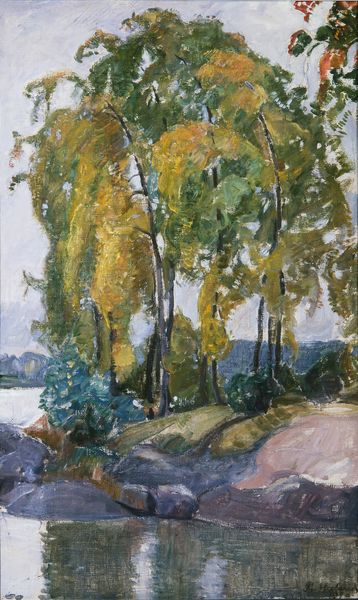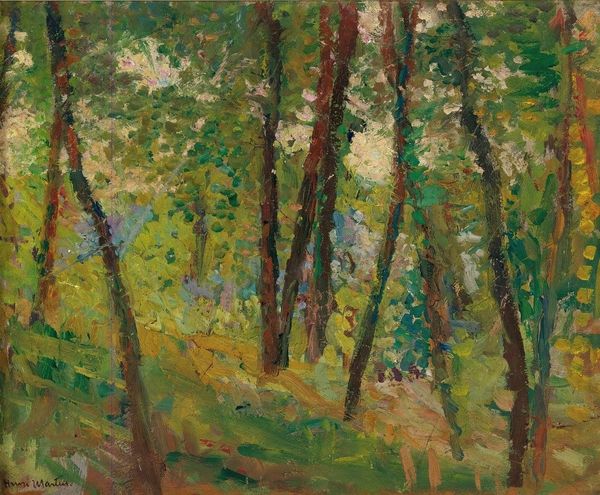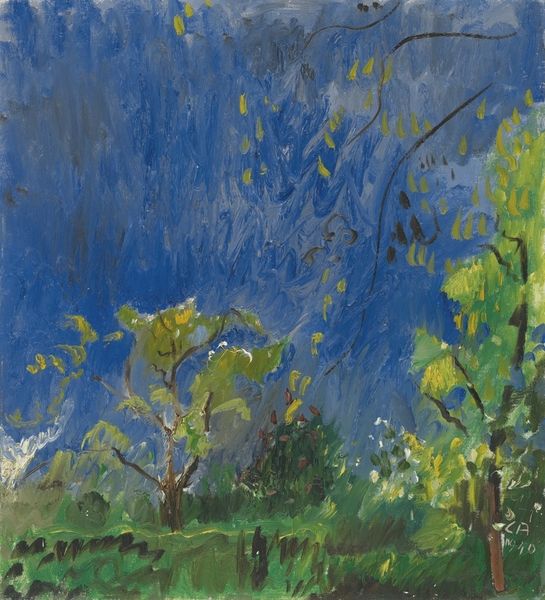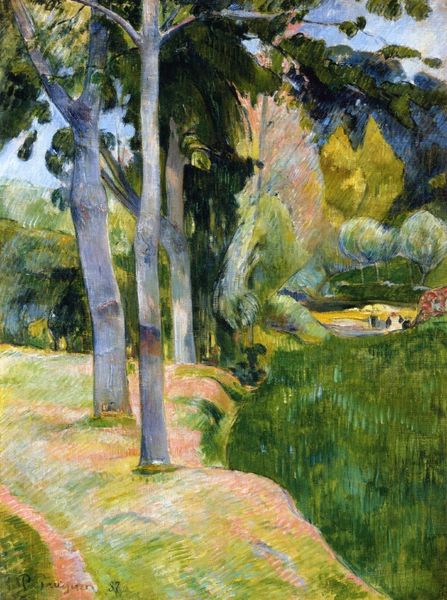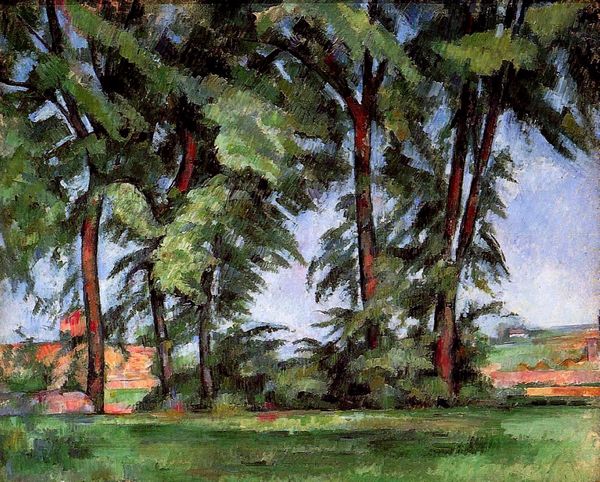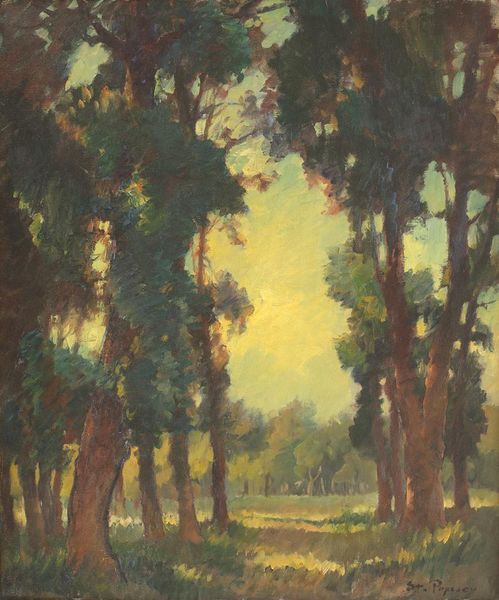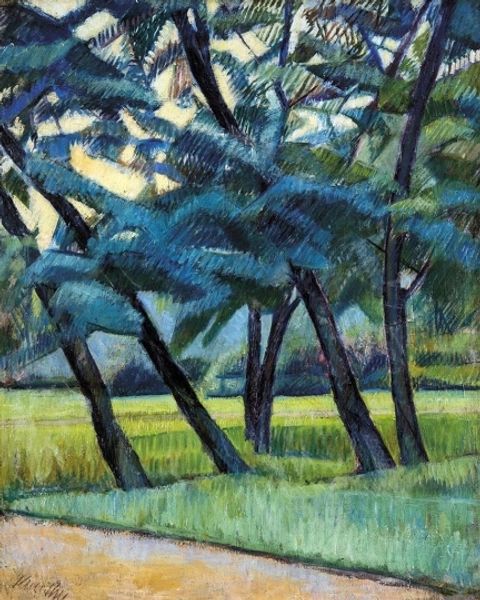
painting, plein-air, oil-paint
#
tree
#
painting
#
impressionism
#
impressionist painting style
#
plein-air
#
oil-paint
#
landscape
#
impressionist landscape
#
form
#
forest
#
plant
#
post-impressionism
#
realism
Dimensions: 73 x 59 cm
Copyright: Public domain
Editor: So, this is "Large Trees at Jas de Bouffan," painted by Paul Cézanne around 1887. It's oil on canvas, depicting a cluster of trees. I'm struck by how solid the forms appear, even though the brushstrokes are so visible. How do you interpret this work in the context of its time? Curator: That’s a great starting point. I see this painting as more than just a landscape; it's a challenge to the academic painting traditions that preceded it. Cézanne is actively dismantling the established hierarchy that privileged history painting and portraiture, centering instead the experience of nature. Think about it: why these trees, at this location? Editor: Well, he did live near Jas de Bouffan, didn't he? Perhaps it's simply a matter of him painting what he saw? Curator: Exactly, but consider *why* he chose to represent it this way. What social and political landscapes are reflected (or perhaps *resisted*) by this conscious return to, and reimagining of, the natural world? The way he renders the trees, not as idealized forms, but as blocks of color and shape—it’s almost defiant, refusing to conform to accepted notions of beauty. Doesn't this fragmentation of form also echo the fracturing of social structures and the rise of individual consciousness during that period? Editor: I hadn't thought about it like that before, seeing his technique as a social statement, rather than purely stylistic innovation. So, are you saying his choice to depict ordinary trees using radical techniques aligns him with broader social changes and a rejection of traditional hierarchies? Curator: Precisely! The democratization of the gaze, if you will. He invites the viewer to question what is considered worthy of representation, echoing calls for greater inclusivity and challenging conventional power structures present at the time. And this painting can spark a dialogue with current conversations about environmental justice, representation, and access. Editor: That's fascinating; I'm now viewing Cézanne and these "Large Trees" with a fresh, more critical perspective. Curator: And hopefully seeing how much artworks of the past may teach about our current times.
Comments
No comments
Be the first to comment and join the conversation on the ultimate creative platform.
